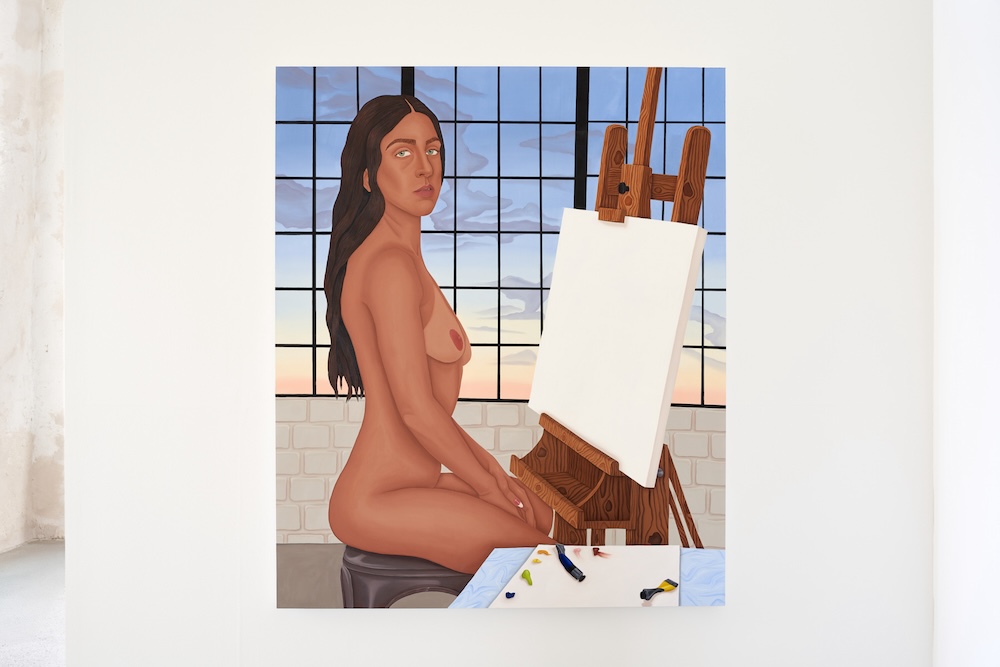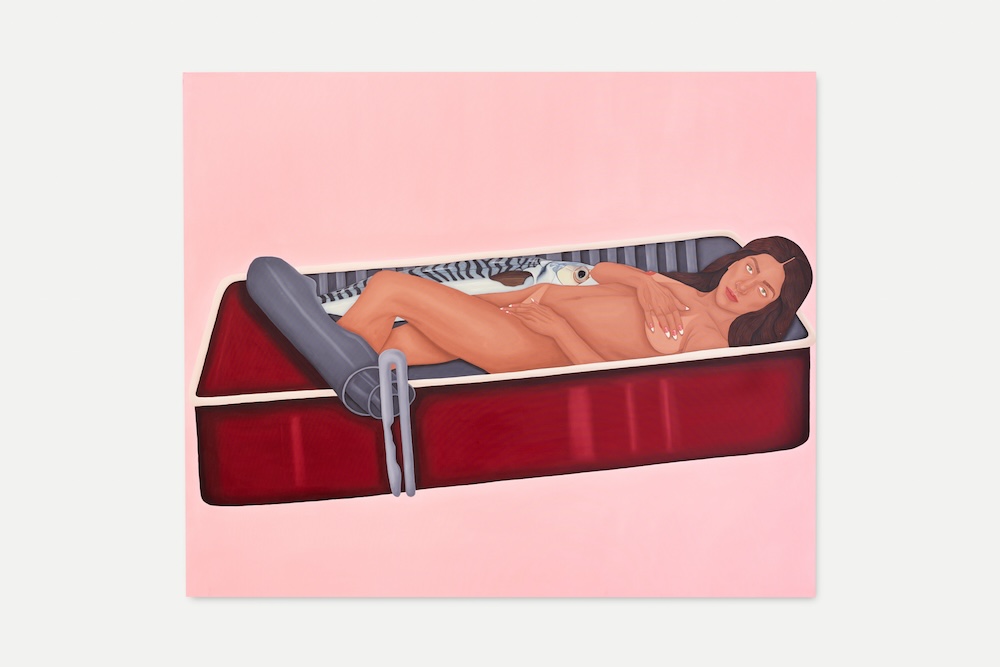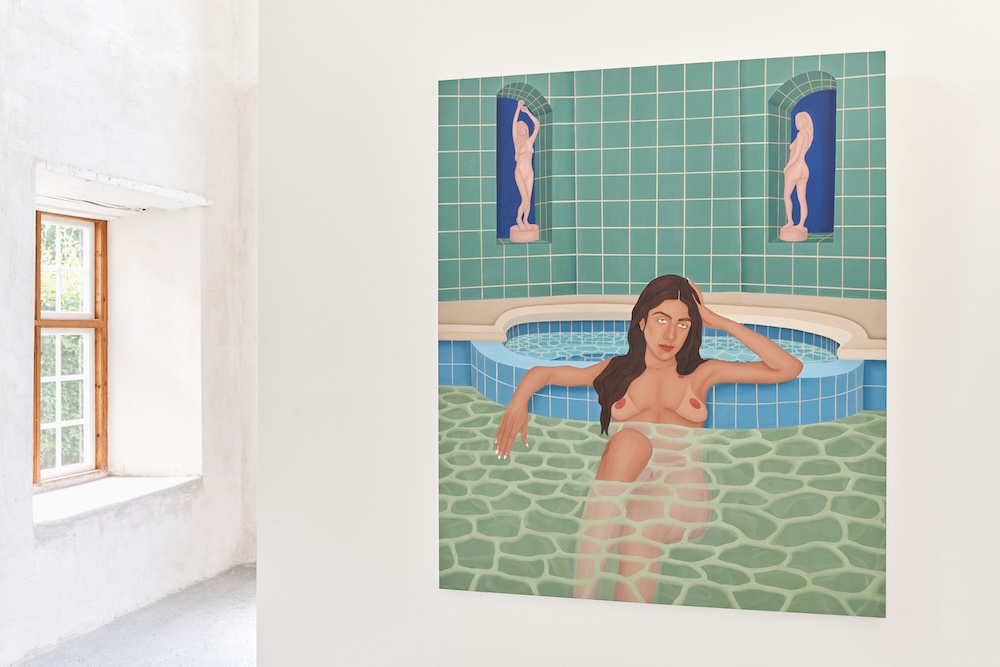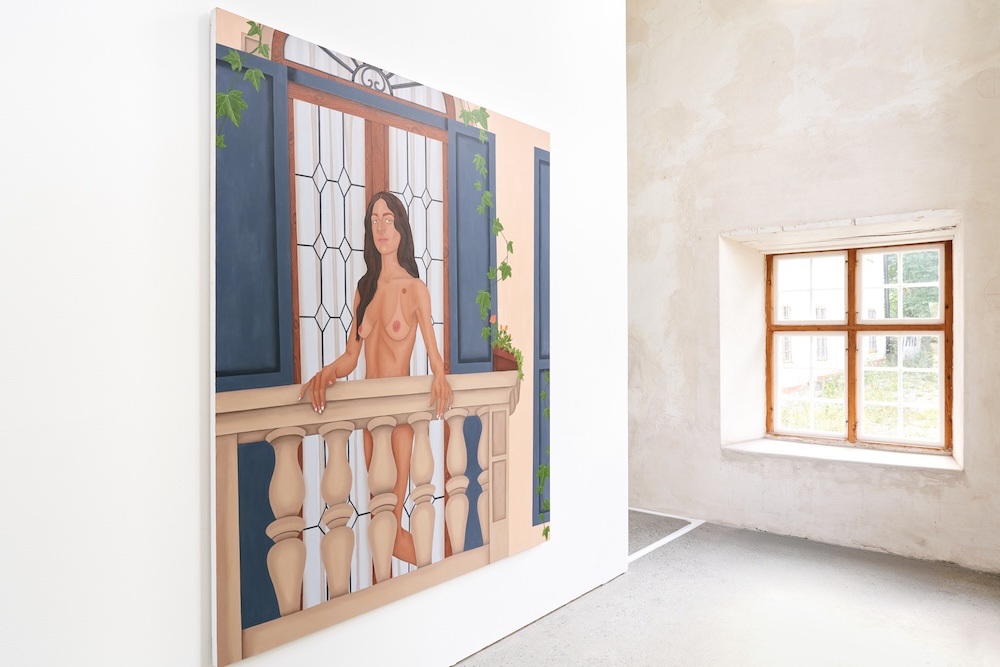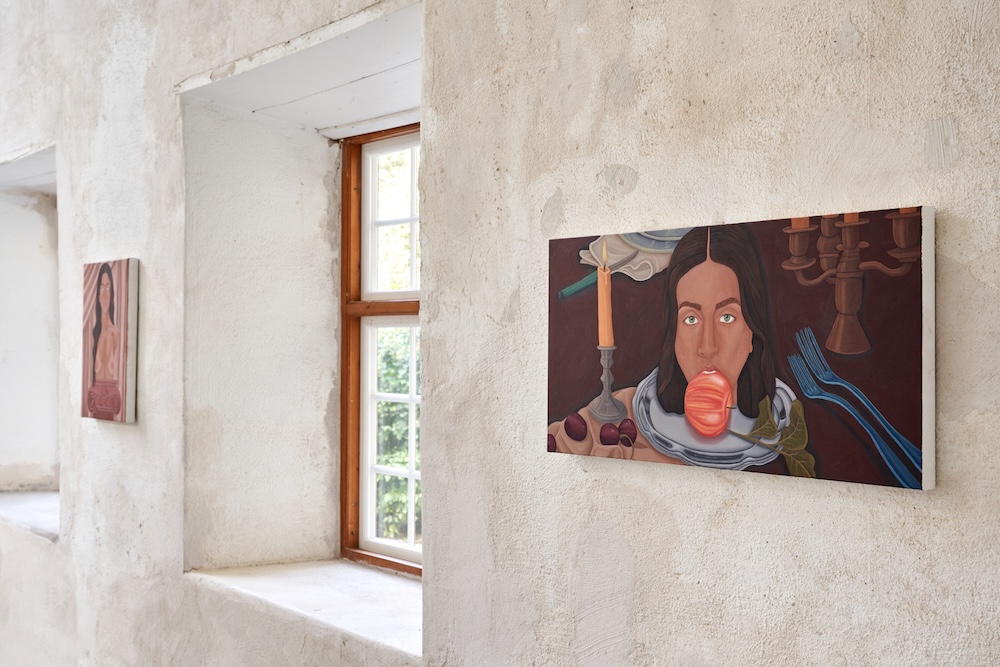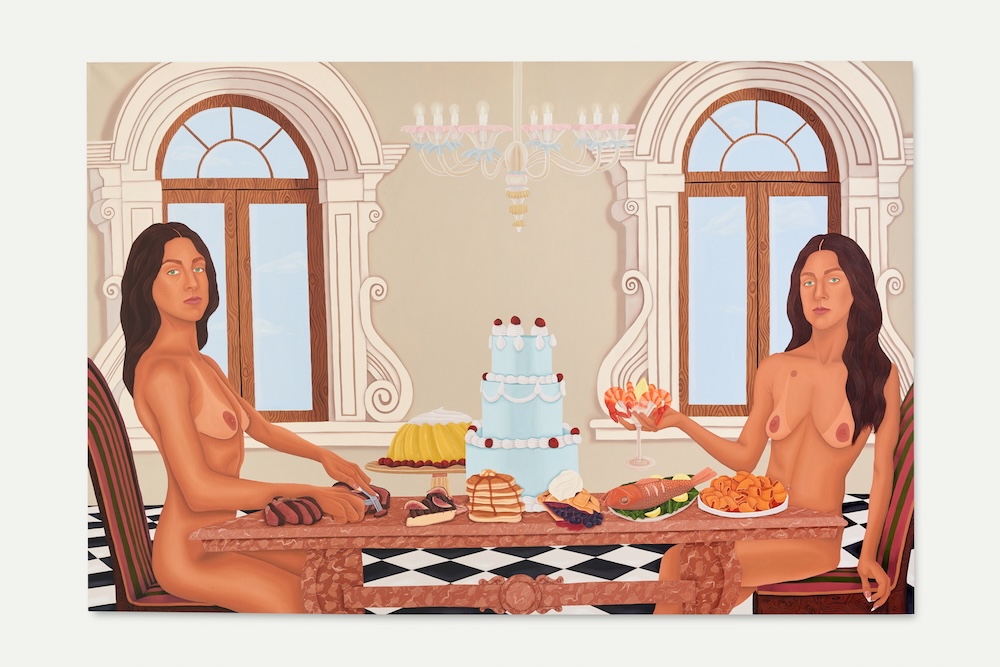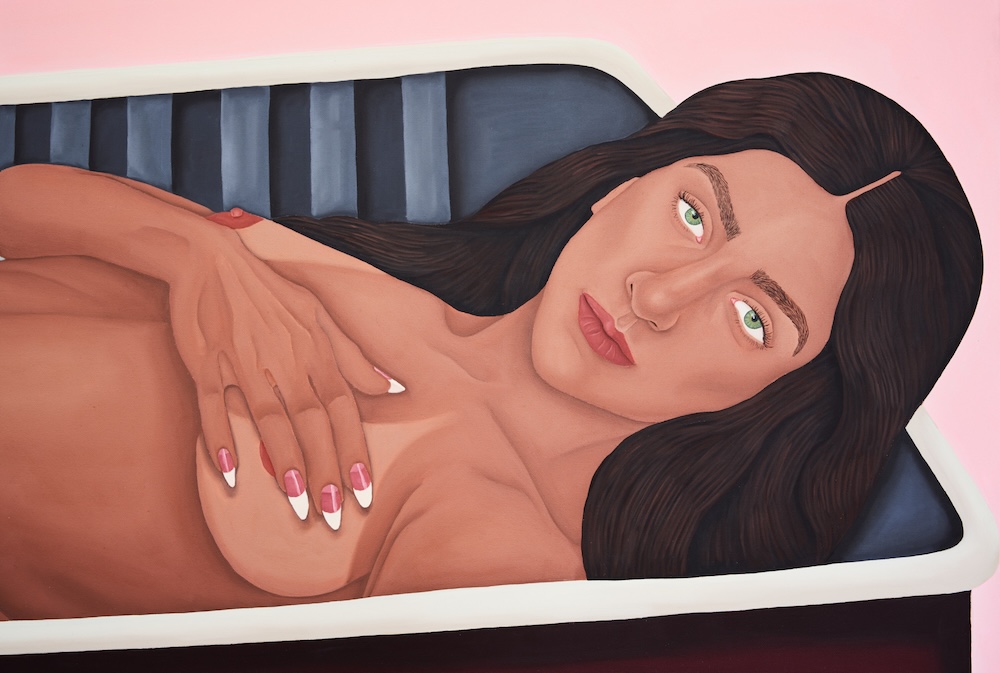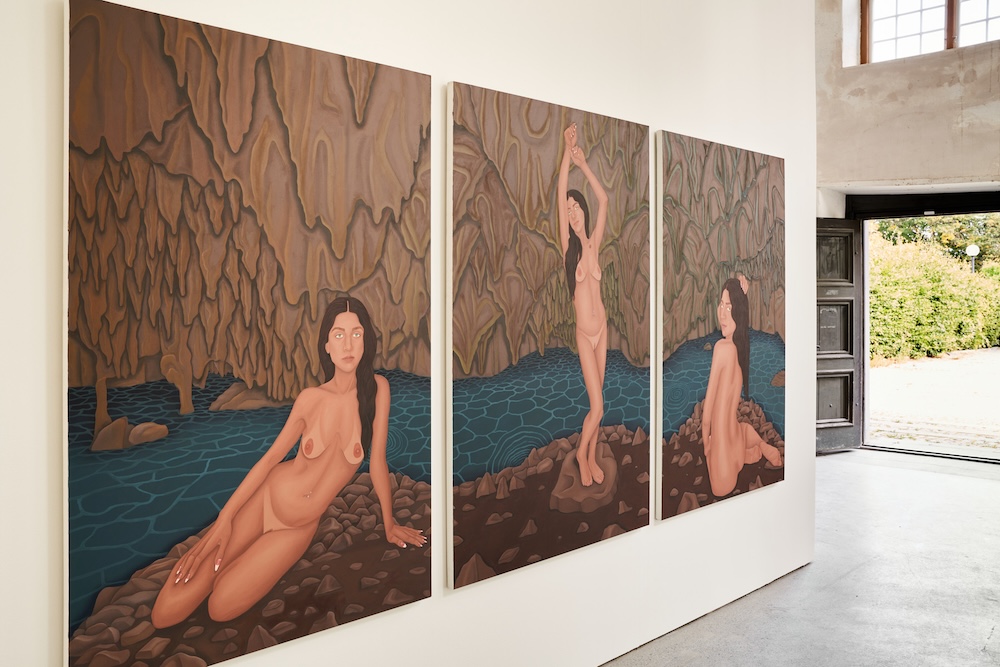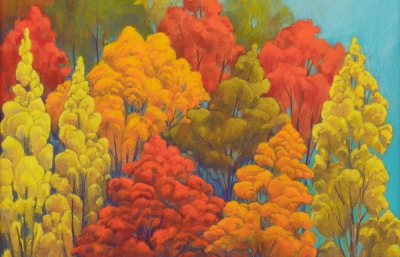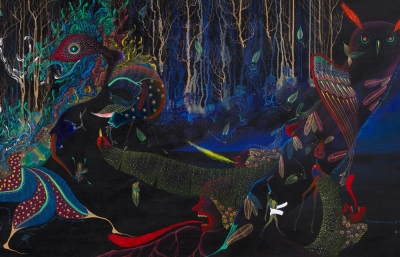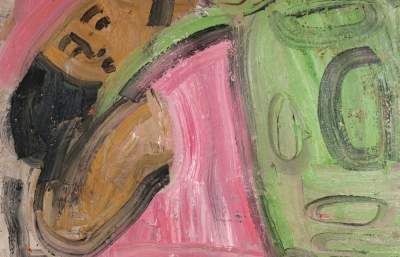Carl Kostyál is delighted to present Violin Theory by Los-Angeles based artist Scout Zabinski, the artist’s second solo exhibition with the gallery. In Zabinski’s own words, Violin Theory is “the idea, or reality rather, that if you play a violin at a certain pitch next to an idle violin, the untouched violin will begin to vibrate and emit the same note. For me, the same interconnectivity exists between people and art, within profound relationships, and in moments I call glimmers. It’s the ceaseless human mission, to suspend our own identities and open ourselves up to the magic of higher vibrations and assimilate or echo their melodies.”
For ‘Violin Theory’, Zabinski has turned Darwinian, theatrically staging the evolution of Western painting across her canvases. In ‘Instinct’, she commands the surrealist fantasy of Leonora Carrington; in ‘Grassy Patch’, she materialises into Manet’s Olympia; and deep inside the Leonardesque, umber-hued grotto of ‘Where I Met You, Why I Love You, Where I Found Me’, she transforms into a Botticellian fantasy, cutting the same contrapposto stance as his Venus in the Uffizi. The quasi-Vitruvian triptych, altarpiece-like in its monumentality, is filled with an abundance of art historical references: even its composition and title loosely recall Gauguin’s post-impressionist masterpiece, ‘Where Do We Come From? What Are We? Where Are We Going?’.
Zabinski’s intentions for ‘Violin Theory’ are twofold. On the one hand, she is making a statement: I am both an artist and art historian. On the other, by using such iconography and inserting herself into canonical imagery (‘Glass Castle’ could be read as a successor to Artemisia Gentileschi’s ‘Self-Portrait as the Allegory of Painting’), she highlights for the viewer the cyclical nature of art itself – how, in perpetuity, it mutates, echoes, and evolves.
This new body of work arrives at somewhat of a renaissance in Zabinski’s life. Since her previous show ‘Into the Veil’ at Carl Kostyál, which dealt with “trauma and recovery, self-reflection, self-image, addiction, abuse, eating disorders, and the chaos of the mind in general,” the artist is now two years sober and has entered a different state of being – one where she can create without the weight of past trauma looming so visibly in her mind. It was during a sojourn on the coastline of Mexico’s Yucatán Peninsula, accompanied by a former lover, that Zabinski began to formulate the new direction her work was taking. She sought to immortalise feelings of ecstasy and bliss on canvas, capturing fleeting moments forever.
Despite the newfound optimism Zabinski experienced while creating these works, hard-hitting topics are still ever-present. Looking to ‘The Centrepiece’, Zabinski’s severed head is presented on a silver dish, à la Andrea Solario, with an apple in her mouth, seemingly paralysed and silenced. Reading the work against the backdrop of American politics, such as the overruling of Roe v. Wade or the possible re-election of arch-misogynist Donald Trump, the work seems to suggest the ongoing crisis of women’s autonomy over their bodies and the disturbing wish in some corners of society to silence them. Such discussions are further pronounced in ‘Conservas’, which pictures Zabinski in a steel can beside a sardine. To the naked eye, the picture is a commentary on women being treated as commodities, with her appearing as a store product, ready to be consumed.
The works of ‘Violin Theory’ are multifaceted and defy singular meaning. For Zabinski, ‘Conservas’ portrays her chrysalis: having spent time away, working on both herself and her art, she is now ready to reveal herself to the world, newly formed. Thus, In a similar train of thought to Roland Barthes’ ‘The Death of the Author’, Zabinski is aware, and in fact, wants audiences to read these works anew, bringing their own perspectives and individual experiences to them – “this show looks at how art is a reflection of our own feelings.”
Upon the completion of ‘Violin Theory’, Zabinski questioned if a moment can truly be captured on canvas. When painting ‘Where I Met You’, which was conceived after her visit to a cenote, she reflects that despite “[taking] photos, nothing could capture that moment… it’s something that you can only experience if you’ve been there.” And in a sense, Zabinski’s practice is in contradiction with a fleeting moment. Her technique is planned, controlled and meticulously detailed.
Post ‘Violin Theory’, the artist has begun to experiment with the possibilities of photography. In a rather Duchampian tone (think his various iterations of ‘La Boîte-en-valise’, each containing reproductions of his past works), Zabinski selected one of the works from the exhibition, ‘Conservas’, and began to reimagine it in photographic form with McCabe Slye. Playing with the elasticity of the medium, she is now beginning to test the very idea of what constitutes an original work of art. Thus, even after the exhibition’s supposed conclusion, Zabinski continues to reverberate from the works, inspirations and moments of her past, producing the new and the fantastical. –Gabriel Shelsky



